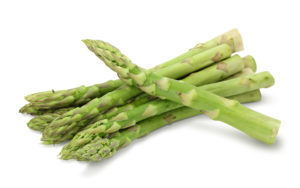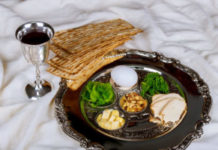
Passover is the most celebrated Jewish holiday, probably because most of us enjoy attending seders.
We come for the closeness of family and friends, foods we remember fondly, and to hear the story repeated of the ancient Hebrews’ historic flight from slavery in Egypt to freedom in the Promised Land.
On the first two nights of Passover, the seder nights, the menu is usually set, mostly by tradition. Often, we eat brisket, potato kugels, matzah casseroles and cakes calling for eight to 10 eggs. While delicious, these foods are heavy.
But once the seders are over, what is on the menu for the nearly week of meals ahead?
I love planning and preparing everyday Passover foods. There are plenty of tasty dishes that don’t call for forbidden foods: legumes and leavened wheat, barley, rye, spelt and oats.
I find it easier and more reliable to observe Passover at home, rather than in restaurants. As we enter the third Passover during the pandemic, it’s also safer at my dining room table.
My game plan is to return to my usual eating style, while adhering to Passover’s parameters. I think lighter and brighter, particularly because Passover is the quintessential spring holiday. With April in the air, it’s time to gravitate toward salads, green vegetables and airy desserts.
When I consider what to serve during these special days, I ask: What would I be eating if it weren’t Passover this week? Roasted meat or grilled fish, green vegetables and salads galore. Why should Passover be any different?
Warm Spinach Salad | Pareve
Serves 8
10-ounce package baby spinach
¼ cup olive oil
1 medium onion, sliced thin
Kosher salt to taste
Freshly ground pepper to taste
8-ounce package of white mushrooms, sliced
2 cloves garlic, minced
1 cup grape tomatoes
Place the spinach in a large salad bowl and reserve.
On a medium flame, heat the oil in a medium-large deep skillet or pot. Add the onion slices, and sprinkle them with salt and pepper. Sauté until the onion slices break into rings.
Add the mushrooms. Continue to sauté until they turn golden brown. Add the garlic and tomatoes, stirring until the garlic turns fragrant. Remove the skillet from the flame.
Cover the skillet for 5 minutes. The recipe can be made to this point a couple of hours ahead.
Reheat the dish to warm when you are ready to serve it. Spoon the mixture onto the spinach, making sure it’s warm — not hot. If it’s hot, it will cook the spinach leaves.
Toss the ingredients and serve.
Microwave Asparagus Express | Pareve
Serves 3-4
1 bunch asparagus
Olive oil for drizzling
Kosher salt to taste
Break off the coarse ends of the asparagus, and discard them. Rinse the asparagus under cold water, and pat it dry with paper towels.
Drizzle a small amount of olive oil on a microwave-safe dinner plate. Place the asparagus on the plate, and roll them around in the oil to lightly coat. Drizzle a little more oil over them. Sprinkle on kosher salt.
Microwave the asparagus on high for 3-4 minutes, depending on the strength of your microwave. The asparagus will be bright green and firm. Serve immediately.
Rosemary Roasted Chicken | Meat
Serves 6
Equipment: roasting pan and rack
Nonstick vegetable spray
4-5 pound whole chicken
Kosher salt
Kosher salt to taste
Freshly ground pepper to taste
¼ teaspoon ground rosemary, plus an additional ¼ teaspoon
4 whole garlic cloves
¼ teaspoon garlic powder
A dusting of paprika
Place the rack inside the roasting pan. Coat them lightly with nonstick vegetable spray. Move the oven rack a little below the center of the oven. Preheat the oven to 375 degrees F.
Rinse the chicken under cold water, inside and out. Drain the water from within, and pat the skin dry with paper towels. Sprinkle the chicken’s cavity with salt, pepper and ¼ teaspoon of rosemary. Place the garlic cloves inside the chicken. Sprinkle the chicken skin all over with kosher salt, pepper, ¼ teaspoon of rosemary and the garlic powder. Dust a little paprika over the breast.
Place the chicken breast side up on the rack. Roast for 1½ hours, or until a meat thermometer inserted into the thigh registers 165 degrees F.
Remove the roasting pan from the oven. Tent the chicken loosely with aluminum foil and let it rest for 10 minutes. Move the chicken to a cutting board and slice it. Serve immediately.
Chocolate Passover Pralines | Pareve
Yield: 60-64 pralines
Equipment: 5 cookie sheets and 5 pieces of parchment paper
12 ounces semisweet chocolate
4 egg whites
1 cup sugar
¼ teaspoon ground cinnamon
2 cups well-chopped pecans
Preheat your oven to 325 degrees F. Line 5 baking sheets with parchment paper.
Set up a double boiler by pouring 2 inches of water into the bottom portion and covering it with the top portion. Place the chocolate in the top portion and cover it with a lid. (If you don’t have a double boiler, you can use a pot for the bottom portion and a heatproof bowl for the top portion. Use aluminum foil as a lid.)
Heat the double boiler over a medium flame until the water comes to a rolling boil. Stir occasionally until the chocolate melts. Remove the boiler from the flame and cool to warm.
Place the egg whites in a large mixing bowl. Using an electric beater, whip the egg whites on a high speed. Once the egg whites thicken, stop and start the beater every minute until soft peaks form. Do not overbeat or the egg whites will turn stiff.
Slowly beat in the sugar and cinnamon on a medium speed until the egg whites become shiny. Add the melted chocolate and mix briefly on a low speed until combined. Using a rubber or silicone spatula, fold in the pecans.
Using 2 teaspoons, pick up the dough with the first one, and push the pralines onto the baking sheets with the other.
Bake for 16 minutes. But after the first 8 minutes, move the upper cookie sheet to the lower level in the oven and vice versa. Bake for another 8 minutes.
The pralines will appear soft but will harden as they cool.






